parasite support
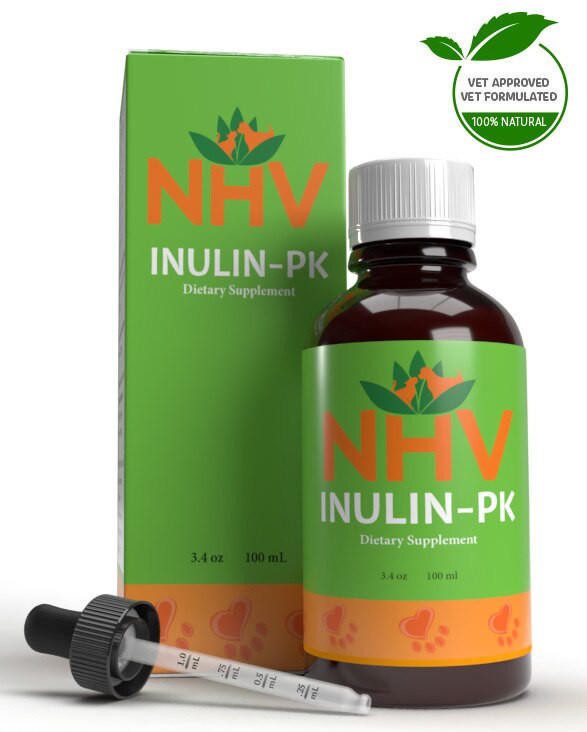
free shipping over $100 (USA & Canada)
1-877-937-4372 the pet expert hotline
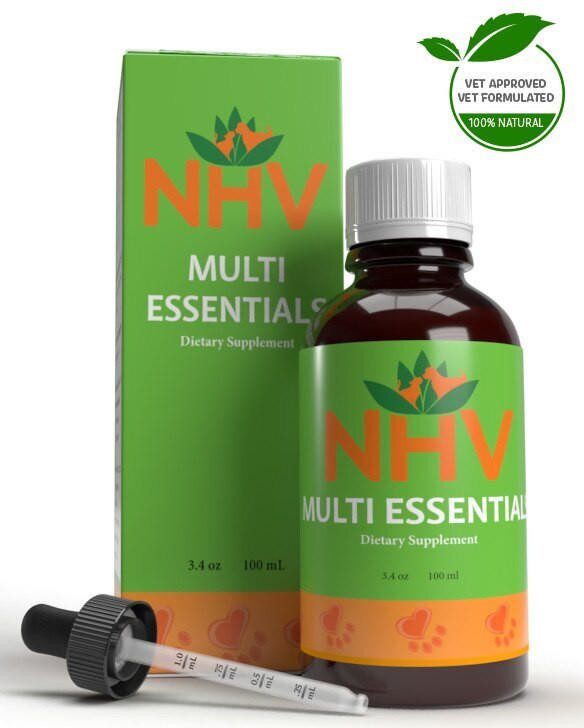
Herbal Digestive Aid, Energy Booster, and Multivitamin for Cats

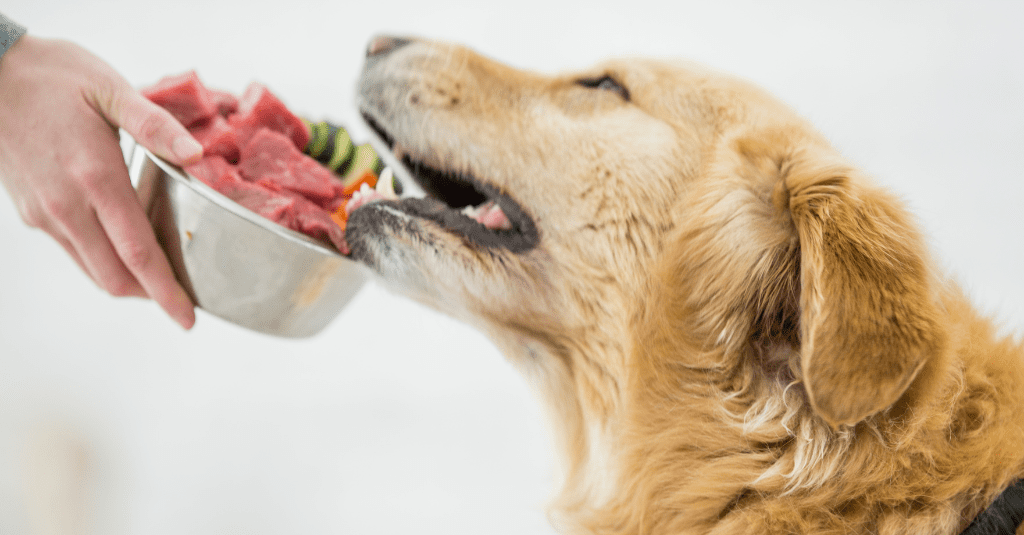
Clinical studies show that raw food for cats and dogs can help promote a longer and healthier life for your little ones. But recent research also points out concerns about the presence of bacteria in raw meat and how this can affect your furkiddo. So how do you balance out the pros and cons and decide which diet is ideal for your cat or dog?
The correct diet is a big part of naturally supporting your little one and improving their quality of life. That is why, at NHV, we recommend a balanced homecooked vet-formulated diet for all pets. However, if you are looking to transition your furkiddo into a raw diet, it’s important to consider the risks as well as the benefits.
Many pet parents are adopting a raw diet for their furkiddos as these meals aim to imitate what our little one’s ancestors would eat in the wild. Both cats and dogs can eat raw food, as long as the diet is properly balanced and the owner uses fresh and good ingredients. Extra care is needed, however, seeing as raw ingredients increase the risk of bacterial infection and malnutrition, especially in pets that are sick and have low immunity.
Raw ingredients increase the risk of bacterial infection and malnutrition, especially in pets that are sick and have a low immune system.
The raw food diet for cats and dogs is also known by the English acronym BARF (Biologically Appropriate Raw Food) or RMBD (Raw Meat Based Diets). The base consists of raw meat, organs (kidneys, liver, etc.), bones (whole or ground) and cartilage, complementing the meal with vegetables and raw eggs.
If you are determined to feed your pet a raw diet, you can find plenty of different commercial brands that sell balanced raw diets in the market. If you are looking for an even more natural approach, consider getting advice from an expert veterinarian nutritionist and prepping their meals at home.
The growing demand for raw food for cats and dogs also increases the potential risk. Many people do not understand the associated risks and, without knowing them, they will not be able to avoid them. So, here are some precautions to take, as well as some caveats:
Chance of malnutrition – If you try to formulate the raw diet for your kitty or pup by yourself at home, you may miss important ingredients and the diet will not be complete. If you want to prepare homemade raw food for cats and dogs, a veterinary nutritionist can help you formulate the ideal diet for your pet, with the correct amount of ingredients.
A veterinary nutritionist can help you formulate the ideal diet for your pet, with the correct amount of ingredients.
Handling raw food – raw food can be a source of bacteria and harmful pathogens. It doesn’t matter if we are handling raw food for our pets or for us, we always have to be careful and clean everything really well to avoid those pathogens. Again, the alternative here would be choosing frozen raw commercial diets, which you only have to defrost and give it to your furbaby right away. Make sure that your little one is eating everything at once. Don’t ever leave raw food sitting in the bowl the whole day. This shouldn’t be done with dry food, even less with raw food.
Storage of raw meat – The meat must be frozen at -20°C for at least 3 days (to kill parasites) and must remain frozen until use. This process does not kill the bacteria and they may be present and viable even after freezing. After thawing, it cannot be refrozen.
Possible digestive complications – not all pets are suited to eat a raw diet. Some furkiddos with certain health conditions like sensitive stomach, digestion issues like IBD, or even if you have a pet with low immunity, are not advised to transition to raw food. There are, however, other nutritional plans that could be better than dry food in these situations, like a personalized home-cooked diet or dehydrated food.
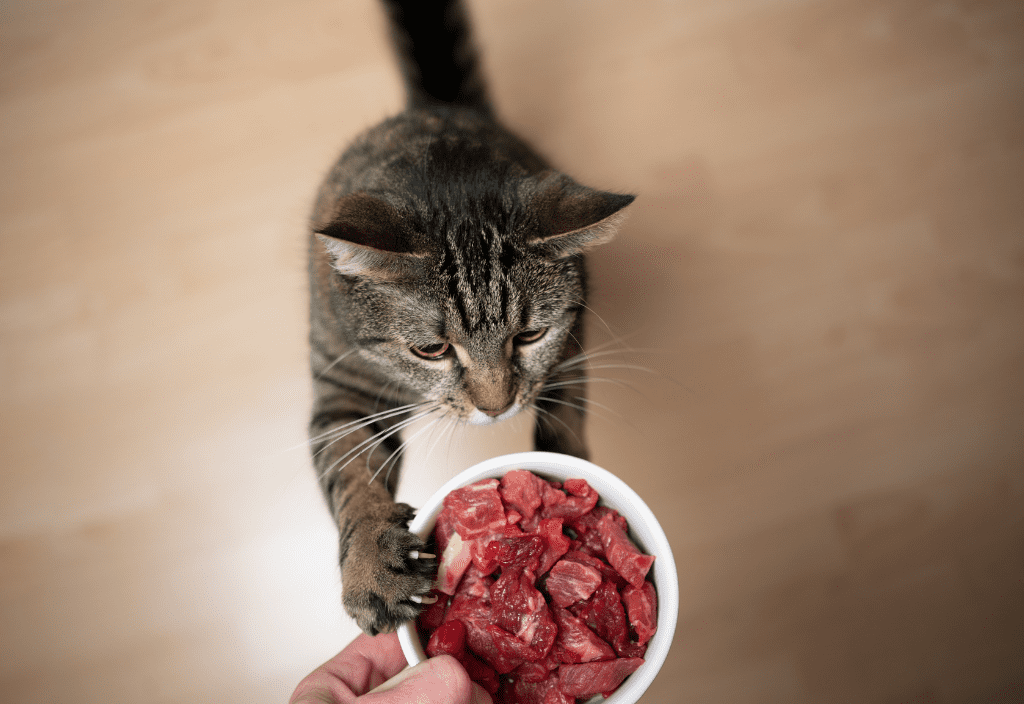
Following a balanced raw diet for cats and dogs comes with many benefits, but it also requires effort and a lot of information on the part of those who decide to opt for this route. Here are some of the pros of introducing raw food for cats and dogs:
Following a balanced raw diet for cats and dogs comes with many benefits.
Healthier skin and coat health – typically, a balanced raw diet has a high concentration of Omega 3 and 6. These fatty acids allow for healthier skin and a shinier coat. And because the diet is more biologically appropriate, it is easier for them to absorb the good nutrients of meat, eggs and fish for example.
Cleaner teeth – raw food is proven to keep teeth cleaner for longer if compared to kibble. That’s due to the lack of synthetic filler ingredients, sugars, or starches that are usually present in dry pet food.
Naturally tasty – a raw diet is much tastier for most cats and dogs than a dry option. For this reason, raw food for cats and dogs can be a great alternative for picky eaters.
More energy – it is easier for healthy pets to absorb the good nutrients of a balanced raw diet, that way they often are more energetic and ready to play. They also seem fitter and with defined muscles if compared to pets that only eat dry food.
Less stinky poop – seeing as the digestion of nutrients is easier, they produce stools with less volume and less odor.

Some of these NHV supplements may help make the raw diet for cats and dogs even richer and healthier:
Supplements like NHV Multi Essentials can help offer all the vitamins and minerals your little one needs to grow strong and may help fill any dietary gaps.
Seeing as a raw diet increases the risk of parasite transmission – for the pets and the others who share space with them – NHV Inulin-PK works as a natural dewormer and also helps improve the absorption of nutrients from the food.
Lastly, NHV Plantaeris can help to prevent diarrhea, a common reaction to changing your little one’s diet.
A raw diet might not be ideal for every furkiddo, seeing as each pet has a different body and different needs. As a rule of thumb, only healthy pets are good candidates to start a new raw diet. Pets that are fighting a serious disease should not make any drastic changes to their nutritional plan.
As a rule of thumb, only healthy pets are good candidates to start a new raw diet. Pets that are fighting a serious disease should not make any drastic changes to their nutritional plan.
When deciding whether or not to consider raw feeding, please have in mind your pet’s age, health condition, breed and weight, and most importantly, the vet’s recommendations.
Particular care is needed with young pets and raw meat-based diets. An incorrect calcium and phosphorus ratio can cause bone deformities and growth problems. Younger animals are also more sensitive to diet transitions.
Seeing as our feline friends are strictly carnivores, they can usually handle raw food diets from a younger age. However, small puppies have a more sensitive digestion system, so we recommend starting their transition into an exclusively raw diet for dogs at around 8 months.
Due to the potential risk of infections, raw food is not recommended for cats and dogs undergoing chemotherapy or who have been diagnosed with diseases that affect the immune or gastrointestinal systems.
Due to its high protein content, raw diets are also not recommended for cats and dogs with liver and/or kidney failure (as they have difficulty metabolizing proteins). And due to the high content of fatty acids, natural food (not formulated by experts) is not recommended for animals with pancreatitis or diabetes. These pets need very special formulations, and a homemade cooked meal prescribed by a vet might be a better option.
Whether a pet is eating dry kibbles or raw meat-based diets, they should always have regular veterinary checkups to ensure that there are no deficiencies that need to be addressed with a specific nutritional plan. This need is even greater in young furkiddos and cats and dogs with chronic diseases.

You have considered the factors in play, spoke to your vet and are ready to start your little one on a raw diet. Your first step is to ask the shelter or the previous owner what your little one has been eating and make the transition slowly.
Like any diet change, we recommend mixing the current diet with a little bit of the new raw food. Start with a bigger portion of the current kibble and just a little bit of the raw diet. Slowly and steadily increase the raw portion and decrease the old dry food, each day, for about 7-10 days.
Throughout this, please observe your little one’s stool consistency, overall behavior and if there is any weight loss or gain. Some adjustments might be needed in the beginning, and a vet nutrition specialist can help ensure that the transition goes smoothly.
At NHV we have pet experts that can help you select the best diet and supplements according to your furbaby’s needs. You can book a consultation with our in-house vet here or get a customized diet plan, specially formulated for your pet’s needs. We are here to always help you!
parasite support

Natural Dog Worms Remedy and Dewormer
buy 2 and save $3
3 month supply for a small to medium size pet
Inulin-PK works as a natural dog worms remedy and parasite cleanser. Prevent parasitic infections and help your hound heal with a holistic dog dewormer remedy from NHV.

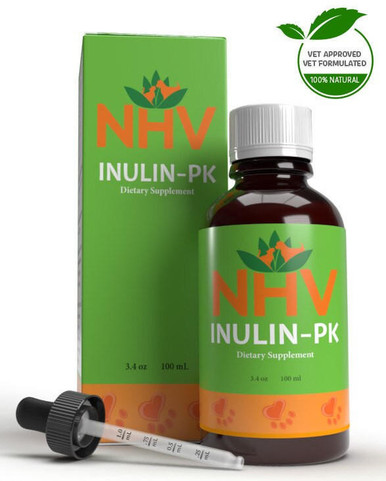
Inulin-PK works as a natural dog worms remedy and parasite cleanser. Prevent parasitic infections and help your hound heal with a holistic dog dewormer remedy from NHV.

Parasites aren’t just annoying pests plaguing your pet. Left to their own devices, parasites can lead to serious health issues. They make it harder for dogs to absorb nutrients from their food, damage their intestines, and sap your pup’s energy. You might also see weight loss, anemia, or diarrhea in a pet with parasites.
Roundworms, tapeworms, hookworms, whipworms, and threadworms are all types of parasites that Inulin-PK can (help) expel from your pet’s body naturally. Consider this worms remedy for dogs in addition to the treatment prescribed by your vet. Natural dog dewormer remedies like Inulin-PK can also help improve your pet’s immunity to prevent future infections.
Inulin-PK is a powerful parasite & infection-fighting aid. It contains plant extracts that specifically target canine parasites.
Our dog worm remedy is formulated with ingredients like elecampane that paralyzes worms’ central nervous system, Papaya to help dissolve worms’ outer layers, Bacopa with strong anti-inflammatory properties, and Jamaica Quassia to help flush parasites out of your dog’s body.
For additional comprehensive care, see our collection of effective kits containing natural dog deworming remedies.
NHV makes significant annual investments in clinical research to make sure our natural pet products are supported by recent clinical results. For more information on what NHV is doing to ensure quality solutions for your pet’s health issues, call our pet expert hotline at 1-877-937-4372.

Elecampane – Paralyzes the central nervous systems of worms
Wormwood – Eliminates intestinal worms and fights parasitic infestations
Jamaica Quassia – Eliminates parasitic worms from the body
Papaya – Dissolves the worm’s outer layer and weakens its defenses
Oregon Grape – Contains antibiotic and immunostimulatory properties, relieves indigestion, and improves nutrient absorption
Fennel – Decreases digestive problems and calms spasms
Bacopa – Contains anti-inflammatory properties, eliminates toxins, and promotes healing
Milk Thistle – Protects and strengthens liver function and stimulates new cell growth in the liver
Celandine – Protects the liver, improves the flow of bile to the liver, and emulsifies gallbladder content
Select your pet's weight to determine the correct dose.
To be taken twice daily. Determine your pet’s weight and then use the easy chart below to determine the correct dose. This is the minimum dosage.
Pet's Weight Dosage
0 - 15 lb = 0.5 ml
16 - 30 lb = 1.0 ml
31 - 45 lb = 1.5 ml
46 - 60 lb = 2.0 ml
61 - 75 lb = 2.5 ml
Over 75 lb = 3.0 ml
For small animals (rabbits, ferrets), avians and reptiles use 1 drop for every 2 lb of body weight.
How to Administer
Shake well before use.
The easiest method is to use the dropper provide and places the drops into your pet’s food or favorite treat. You can also use the dropper and squirt directly into the pet’s mouth.
Some pets can be finicky, if this occurs consider hiding the drops in foods most pet’s love such as fish, chicken or yogurt or a favourite treat. If your pet only eats dry food then soak a few kibbles at feeding time.
For Best Results
Herbal dietary supplements are beneficial to the health and wellbeing of your pet and are safe for long-term use. Every pet responds to natural herbal supplements differently, therefore it is important to be consistent and administer the product daily. Supplements generally take two to four weeks to take effect, however this will vary from one animal to the next.
Product Storage
All NHV Natural Pet Products are pure herbal extracts and contain no artificial additives, preservatives or coloring. Shelf life after opening is 6 months and must be refrigerated after opening.
Cautions and Contraindications
Do not use Inulin-PK in pregnant animals.
Speak to your vet before using our products. A second visit is recommended if your pet’s condition does not improve, or deteriorates after continued use of the supplements.
All information provided by NHV Natural Pet Products is for educational purposes only.
Parasites aren’t just annoying pests plaguing your pet. Left to their own devices, parasites can lead to serious health issues. They make it harder for dogs to absorb nutrients from their food, damage their intestines, and sap your pup’s energy. You might also see weight loss, anemia, or diarrhea in a pet with parasites.
Roundworms, tapeworms, hookworms, whipworms, and threadworms are all types of parasites that Inulin-PK can (help) expel from your pet’s body naturally. Consider this worms remedy for dogs in addition to the treatment prescribed by your vet. Natural dog dewormer remedies like Inulin-PK can also help improve your pet’s immunity to prevent future infections.
Inulin-PK is a powerful parasite & infection-fighting aid. It contains plant extracts that specifically target canine parasites.
Our dog worm remedy is formulated with ingredients like elecampane that paralyzes worms’ central nervous system, Papaya to help dissolve worms’ outer layers, Bacopa with strong anti-inflammatory properties, and Jamaica Quassia to help flush parasites out of your dog’s body.
For additional comprehensive care, see our collection of effective kits containing natural dog deworming remedies.
NHV makes significant annual investments in clinical research to make sure our natural pet products are supported by recent clinical results. For more information on what NHV is doing to ensure quality solutions for your pet’s health issues, call our pet expert hotline at 1-877-937-4372.

Elecampane – Paralyzes the central nervous systems of worms
Wormwood – Eliminates intestinal worms and fights parasitic infestations
Jamaica Quassia – Eliminates parasitic worms from the body
Papaya – Dissolves the worm’s outer layer and weakens its defenses
Oregon Grape – Contains antibiotic and immunostimulatory properties, relieves indigestion, and improves nutrient absorption
Fennel – Decreases digestive problems and calms spasms
Bacopa – Contains anti-inflammatory properties, eliminates toxins, and promotes healing
Milk Thistle – Protects and strengthens liver function and stimulates new cell growth in the liver
Celandine – Protects the liver, improves the flow of bile to the liver, and emulsifies gallbladder content
Select your pet's weight to determine the correct dose.
To be taken twice daily. Determine your pet’s weight and then use the easy chart below to determine the correct dose. This is the minimum dosage.
Pet's Weight Dosage
0 - 15 lb = 0.5 ml
16 - 30 lb = 1.0 ml
31 - 45 lb = 1.5 ml
46 - 60 lb = 2.0 ml
61 - 75 lb = 2.5 ml
Over 75 lb = 3.0 ml
For small animals (rabbits, ferrets), avians and reptiles use 1 drop for every 2 lb of body weight.
How to Administer
Shake well before use.
The easiest method is to use the dropper provide and places the drops into your pet’s food or favorite treat. You can also use the dropper and squirt directly into the pet’s mouth.
Some pets can be finicky, if this occurs consider hiding the drops in foods most pet’s love such as fish, chicken or yogurt or a favourite treat. If your pet only eats dry food then soak a few kibbles at feeding time.
For Best Results
Herbal dietary supplements are beneficial to the health and wellbeing of your pet and are safe for long-term use. Every pet responds to natural herbal supplements differently, therefore it is important to be consistent and administer the product daily. Supplements generally take two to four weeks to take effect, however this will vary from one animal to the next.
Product Storage
All NHV Natural Pet Products are pure herbal extracts and contain no artificial additives, preservatives or coloring. Shelf life after opening is 6 months and must be refrigerated after opening.
Cautions and Contraindications
Do not use Inulin-PK in pregnant animals.
Speak to your vet before using our products. A second visit is recommended if your pet’s condition does not improve, or deteriorates after continued use of the supplements.
All information provided by NHV Natural Pet Products is for educational purposes only.
overall vitality
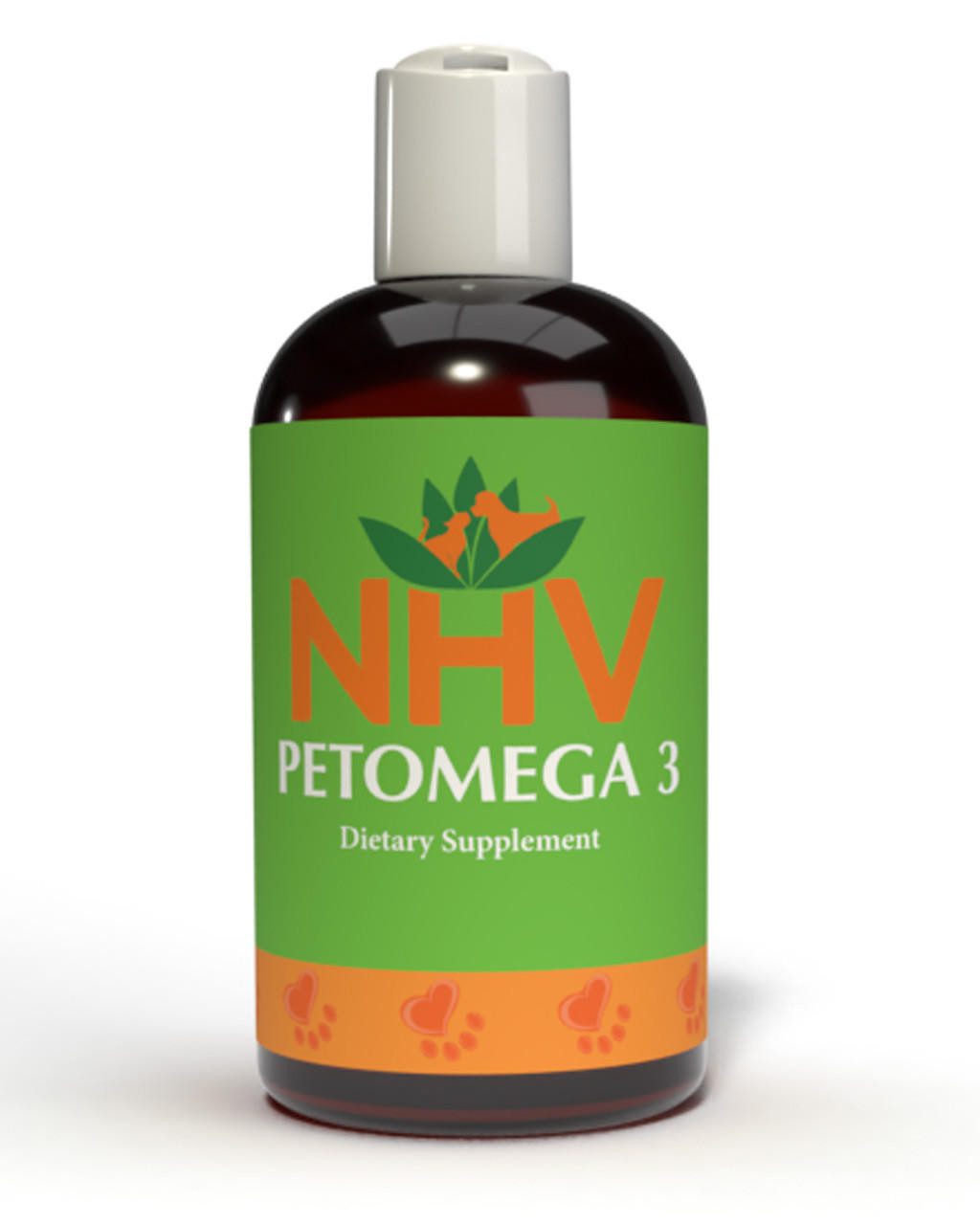
For Overall Health and Well-Being
buy 2 and save $3
An Omega 3 supplement for cats to support their joints, heart, eyes, immune system, and overall organ function.

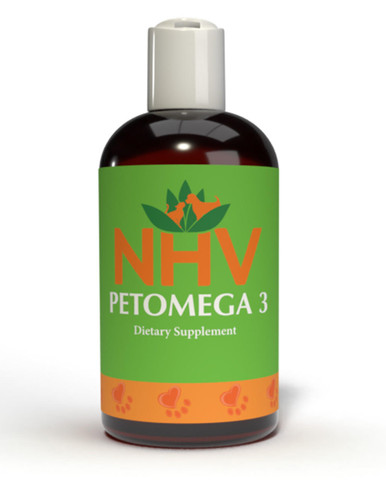
An Omega 3 supplement for cats to support their joints, heart, eyes, immune system, and overall organ function.

Our cat omega 3 supplement is naturally made from the oils of sardines, anchovies, and North Atlantic cod. It’s an excellent source of EPA (Eicosapentaenoic Acid 600mg) and DHA (Docosahexaenoic acid 460mg) essential omega 3 fatty acids. It’s molecularly distilled and cold-pressed to improve the bioavailability
Support your cat with human-grade quality omega 3 fish oil supplements. Many processed pet foods are deficient in this important nutrient. And according to the University of Maryland Medical Center, "It is very important to maintain a balance between omega-3 and omega-6 fatty acids in the diet. A proper balance helps maintain and even improve health."
It’s important for cats to get essential fatty acids through their diet. This omega 3 supplement for cats will help keep them healthy, and even finicky cats actually like to take it.
Benefits of Cat omega 3 supplements:
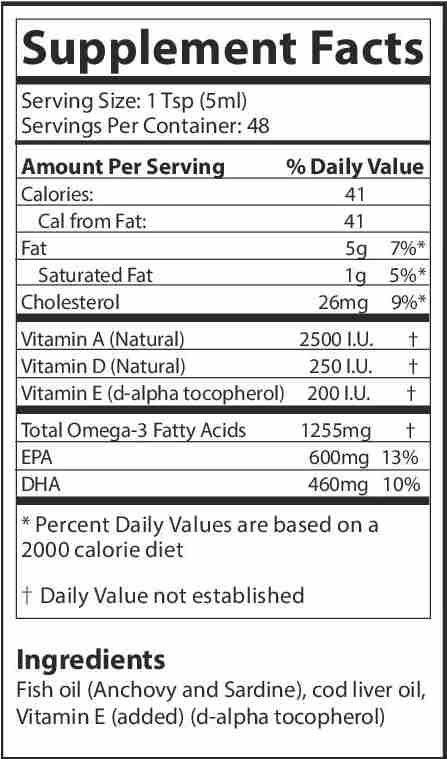
Suggested Dosage: To be taken once per day. Add to food based on weight chart.
Therapeutic Dosage: Double the quantity for maximum period of 4 weeks or follow veterinarian advise.
Pet’s Weight Dosage
0-15 lb = ¼ tsp
15-30 lb = ½ tsp
30-60 lb = 1 tsp
60-90 lb = 1 ½ tsp
How to Administer: Shake well before use. The easiest method is to add the dosage to your pets food. Some pets can be finicky, if this occurs consider hiding the appropriate amount in food most pet’s love such as fish, chicken, yogurt, or a favorite treat. If your pet only eats dry food then soak kibbles at feeding time.
For Best Results
Dietary supplements are beneficial to the health and well-being of your pet and are safe for long-term use. Every pet responds to natural supplements differently, therefore it is important to be consistent and administer the product daily. Supplements generally take two to four weeks to take effect, however this will vary from one animal to the next.
Product Storage
All NHV Natural Pet Products contain no artificial additives, preservatives or coloring. Shelf life after opening is 6 months and must be refrigerated after opening.
Cautions and Contraindications
Avoid During Pregnancy.
Our cat omega 3 supplement is naturally made from the oils of sardines, anchovies, and North Atlantic cod. It’s an excellent source of EPA (Eicosapentaenoic Acid 600mg) and DHA (Docosahexaenoic acid 460mg) essential omega 3 fatty acids. It’s molecularly distilled and cold-pressed to improve the bioavailability
Support your cat with human-grade quality omega 3 fish oil supplements. Many processed pet foods are deficient in this important nutrient. And according to the University of Maryland Medical Center, "It is very important to maintain a balance between omega-3 and omega-6 fatty acids in the diet. A proper balance helps maintain and even improve health."
It’s important for cats to get essential fatty acids through their diet. This omega 3 supplement for cats will help keep them healthy, and even finicky cats actually like to take it.
Benefits of Cat omega 3 supplements:

Suggested Dosage: To be taken once per day. Add to food based on weight chart.
Therapeutic Dosage: Double the quantity for maximum period of 4 weeks or follow veterinarian advise.
Pet’s Weight Dosage
0-15 lb = ¼ tsp
15-30 lb = ½ tsp
30-60 lb = 1 tsp
60-90 lb = 1 ½ tsp
How to Administer: Shake well before use. The easiest method is to add the dosage to your pets food. Some pets can be finicky, if this occurs consider hiding the appropriate amount in food most pet’s love such as fish, chicken, yogurt, or a favorite treat. If your pet only eats dry food then soak kibbles at feeding time.
For Best Results
Dietary supplements are beneficial to the health and well-being of your pet and are safe for long-term use. Every pet responds to natural supplements differently, therefore it is important to be consistent and administer the product daily. Supplements generally take two to four weeks to take effect, however this will vary from one animal to the next.
Product Storage
All NHV Natural Pet Products contain no artificial additives, preservatives or coloring. Shelf life after opening is 6 months and must be refrigerated after opening.
Cautions and Contraindications
Avoid During Pregnancy.
diarrhea support
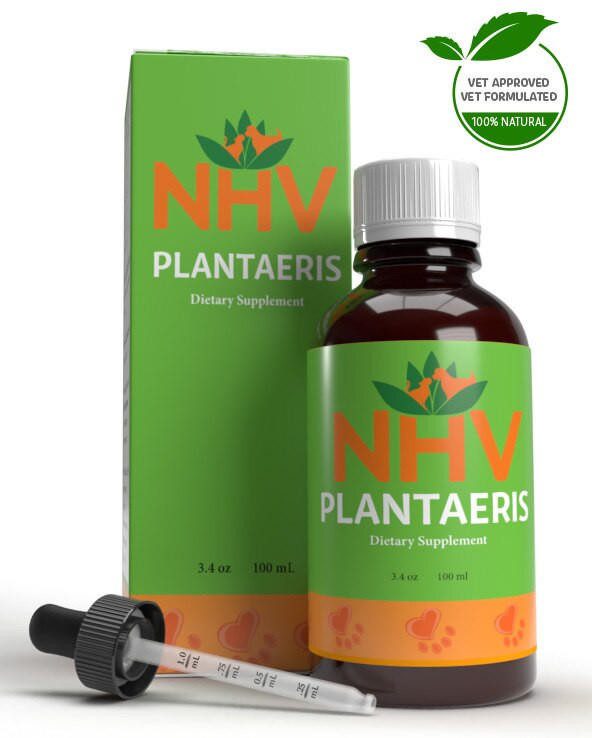
Natural Relief for Diarrhea and Inflammatory Bowel Disease (IBD)
buy 2 and save $3
3 month supply for a small to medium size pet
Plantaeris is a natural dog diarrhea remedy that works quickly and gently to support the relief of digestive disorders and the associated symptoms.


Plantaeris is a natural dog diarrhea remedy that works quickly and gently to support the relief of digestive disorders and the associated symptoms.

Reduce intestinal upset and diarrhea with Plantaeris, a fast-acting, gentle, herbal, natural dog diarrhea remedy that will help your pet feel better in no time. Plantaeris is designed to help reduce symptoms of diarrhea.
Diarrhea is a symptom of digestive disorders. In dogs, it can be caused by inflammatory bowel disease, food allergies, or parasites such as giardia. Help your pet with Plantaeris dog diarrhea supplement and ensure they have plenty of fluids to prevent dehydration.
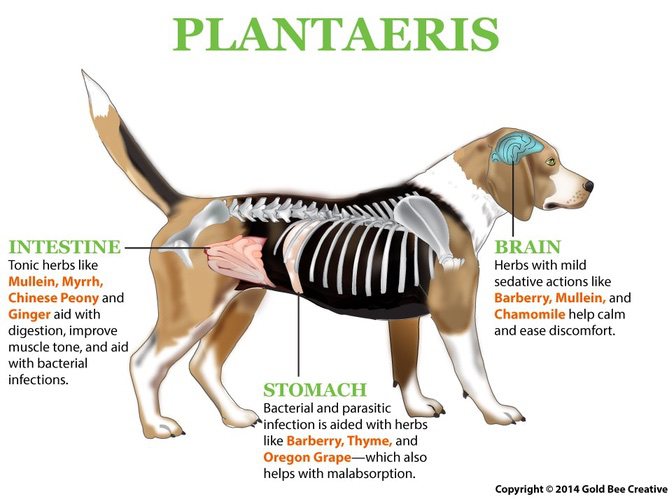
Barberry – Treats inflammation and infections.
Mullein – Soothes and lubricates the tissues of the GI tract.
Bayberry – Contains tannins, resins, and gums that control bacterial infection.
Myrrh – Relieves spasms, inflammation, and digestive discomfort.
Thyme – Improves digestion and relaxes GI spasms.
Chamomile – Relaxes the digestive system.
Chinese Peony – Reduces inflammation and relaxes spasms.
Ginger – Relieves discomfort and stimulates circulation.
Oregon Grape – Helps relieve indigestion and malabsorption.
Select your pet's weight to determine the correct dose.
To be taken twice daily. Determine your pet’s weight and then use the easy chart below to determine the correct dose. This is the minimum dosage.
Pet's Weight Dosage
0 - 15 lb = 0.5 ml
16 - 30 lb = 1.0 ml
31 - 45 lb = 1.5 ml
46 - 60 lb = 2.0 ml
61 - 75 lb = 2.5 ml
Over 75 lb = 3.0 ml
How to Administer
Shake well before use. The easiest method is to use the dropper provide and places the drops into your pet’s food or favorite treat. You can also use the dropper and squirt directly into the pet’s mouth.
Some pets can be finicky, if this occurs consider hiding the drops in foods most pet’s love such as fish, chicken or yogurt or a favorite treat. If your pet only eats dry food then soak a few kibbles at feeding time.
For Best Results
Herbal dietary supplements are beneficial to the health and wellbeing of your pet and are safe for long-term use. Every pet responds to natural herbal supplements differently, therefore it is important to be consistent and administer the product daily. Supplements generally take two to four weeks to take effect, however this will vary from one animal to the next.
Product Storage
All NHV Natural Pet Products are pure herbal extracts and contain no artificial additives, preservatives or coloring. Shelf life after opening is 6 months and must be refrigerated after opening.
Cautions and Contraindications
Do not use Plantaeris in pregnant or nursing animals. Speak to your vet before using our products. A second visit is recommended if your pet’s condition does not improve, or deteriorates after continued use of the supplements.
All information provided by NHV Natural Pet Products is for educational purposes only.
Reduce intestinal upset and diarrhea with Plantaeris, a fast-acting, gentle, herbal, natural dog diarrhea remedy that will help your pet feel better in no time. Plantaeris is designed to help reduce symptoms of diarrhea.
Diarrhea is a symptom of digestive disorders. In dogs, it can be caused by inflammatory bowel disease, food allergies, or parasites such as giardia. Help your pet with Plantaeris dog diarrhea supplement and ensure they have plenty of fluids to prevent dehydration.

Barberry – Treats inflammation and infections.
Mullein – Soothes and lubricates the tissues of the GI tract.
Bayberry – Contains tannins, resins, and gums that control bacterial infection.
Myrrh – Relieves spasms, inflammation, and digestive discomfort.
Thyme – Improves digestion and relaxes GI spasms.
Chamomile – Relaxes the digestive system.
Chinese Peony – Reduces inflammation and relaxes spasms.
Ginger – Relieves discomfort and stimulates circulation.
Oregon Grape – Helps relieve indigestion and malabsorption.
Select your pet's weight to determine the correct dose.
To be taken twice daily. Determine your pet’s weight and then use the easy chart below to determine the correct dose. This is the minimum dosage.
Pet's Weight Dosage
0 - 15 lb = 0.5 ml
16 - 30 lb = 1.0 ml
31 - 45 lb = 1.5 ml
46 - 60 lb = 2.0 ml
61 - 75 lb = 2.5 ml
Over 75 lb = 3.0 ml
How to Administer
Shake well before use. The easiest method is to use the dropper provide and places the drops into your pet’s food or favorite treat. You can also use the dropper and squirt directly into the pet’s mouth.
Some pets can be finicky, if this occurs consider hiding the drops in foods most pet’s love such as fish, chicken or yogurt or a favorite treat. If your pet only eats dry food then soak a few kibbles at feeding time.
For Best Results
Herbal dietary supplements are beneficial to the health and wellbeing of your pet and are safe for long-term use. Every pet responds to natural herbal supplements differently, therefore it is important to be consistent and administer the product daily. Supplements generally take two to four weeks to take effect, however this will vary from one animal to the next.
Product Storage
All NHV Natural Pet Products are pure herbal extracts and contain no artificial additives, preservatives or coloring. Shelf life after opening is 6 months and must be refrigerated after opening.
Cautions and Contraindications
Do not use Plantaeris in pregnant or nursing animals. Speak to your vet before using our products. A second visit is recommended if your pet’s condition does not improve, or deteriorates after continued use of the supplements.
All information provided by NHV Natural Pet Products is for educational purposes only.
Published: August 18, 2022